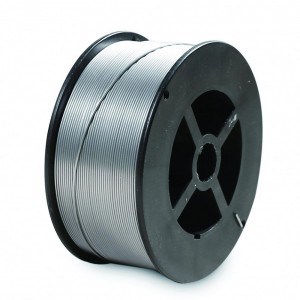ERNiCrMo-3 Nickel Alloy Solid Wire (for MIG/TIG Welding)
MIG vs TIG Welding: The Main Differences
The main difference between MIG and TIG welding is the electrode they use to create the arc. MIG uses a consumable solid wire that is machine fed to the weld whereas TIG welding uses a non-consumable electrode. TIG welding will often use a hand-held filler rod to create the join.
TIG Welding: Benefits and Applications
TIG—i.e., tungsten inert gas—welding is highly versatile, enabling industry professionals to join a wide range of small and thin materials. It uses a non-consumable tungsten electrode to heat the metal and can be used with or without a filler.
Compared to MIG welding, it is much slower, often resulting in longer lead times and greater production costs. Additionally, welders require highly specialized training to ensure they achieve proper precision and accuracy. However, it also offers greater control during the welding operation and produces strong, precise, and aesthetically pleasing welds.
MIG Welding: Benefits and Applications
MIG—i.e., metal inert gas—welding is generally used for large and thick materials. It employs a consumable wire that acts as both the electrode and the filler material.
Compared to TIG welding, it is much faster, resulting in shorter lead times and lower production costs. Additionally, it is easier to learn and produces welds that require little to no cleaning and finishing. However, its welds are not as precise, strong, or clean as those formed by TIG welding operations.
Application
It is suitable for welding of nickel-chromium-molybdenum alloys, etc., and can be used for dissimilar material welding or other surface surfacing welding.
Welding wire chemical composition(Wt%)
|
Model |
Welding wire chemical composition(Wt%) |
|
||||||||
|
C |
Mn |
Si |
Cr |
Ni |
Mo |
P |
S |
Cu |
Other |
|
|
ERNiCrMo-3 |
0.006 |
<0.14 |
<0.13 |
20.69 |
66.29 |
8.25 |
- |
- |
- |
Fe:0.61 Nb:3.49 |
Product performance
|
Compliant (equivalent) standard model |
An example of physical properties of deposited metal (with SJ601) |
||
|
GB/T15620 |
AWS A5.14/A5.14M |
Tensile StrengthMPa |
Elongation% |
|
SNi6625 |
ERNiCrMo-3 |
780 |
45 |
MIG Product Specifications
|
Wire diameter |
¢0.8 |
¢1.0 |
¢1.2 |
|
Package weight |
12.5Kg/piece |
15Kg/piece |
15Kg/piece |
TIG Product Specifications
|
Wire diameter |
¢2.5 |
¢3.2 |
¢4.0 |
¢5.0 |
|
Package weight |
5Kg/plastic box,20Kg/carton(Contains 4 small plastic boxes) |
|||






